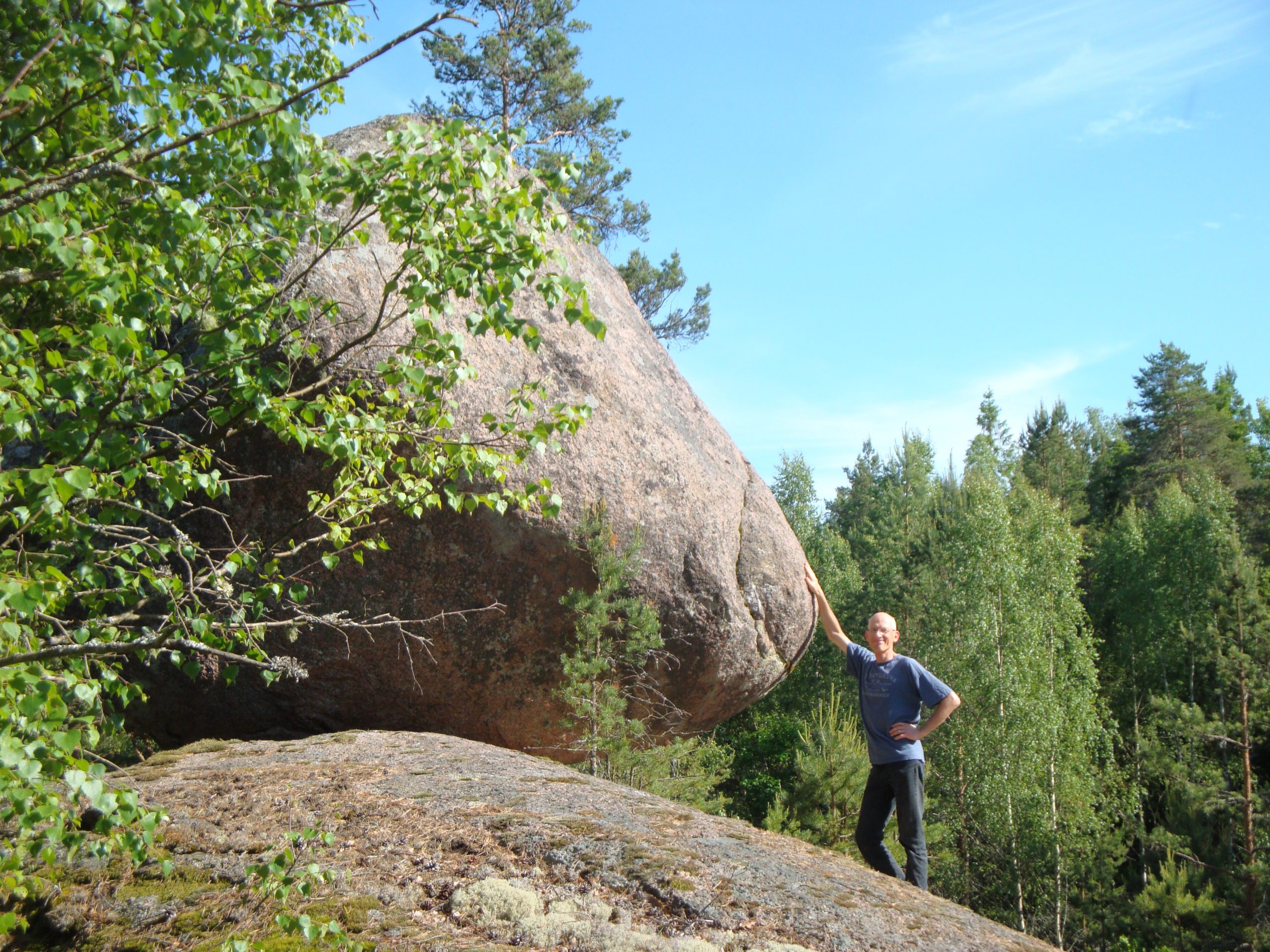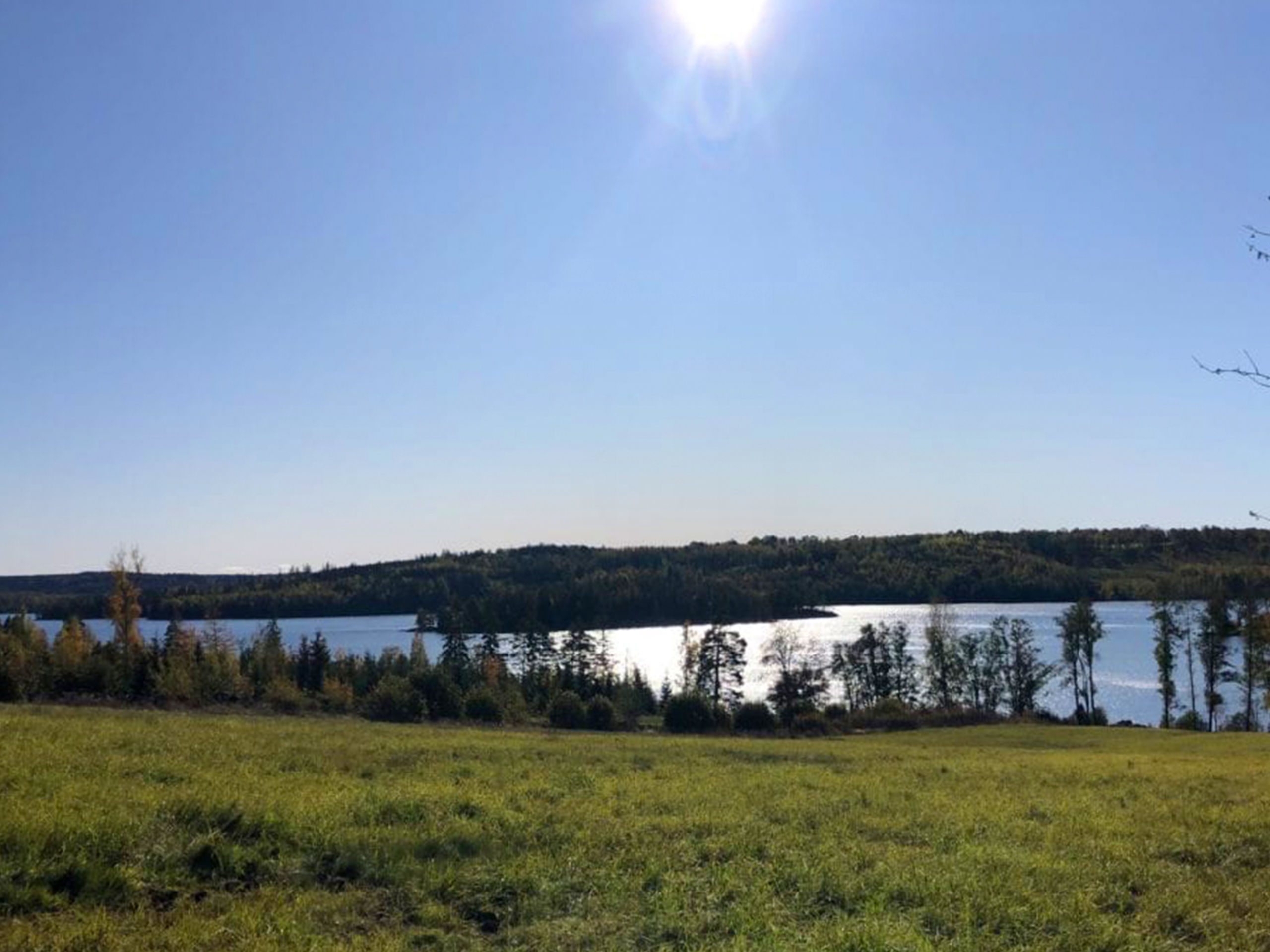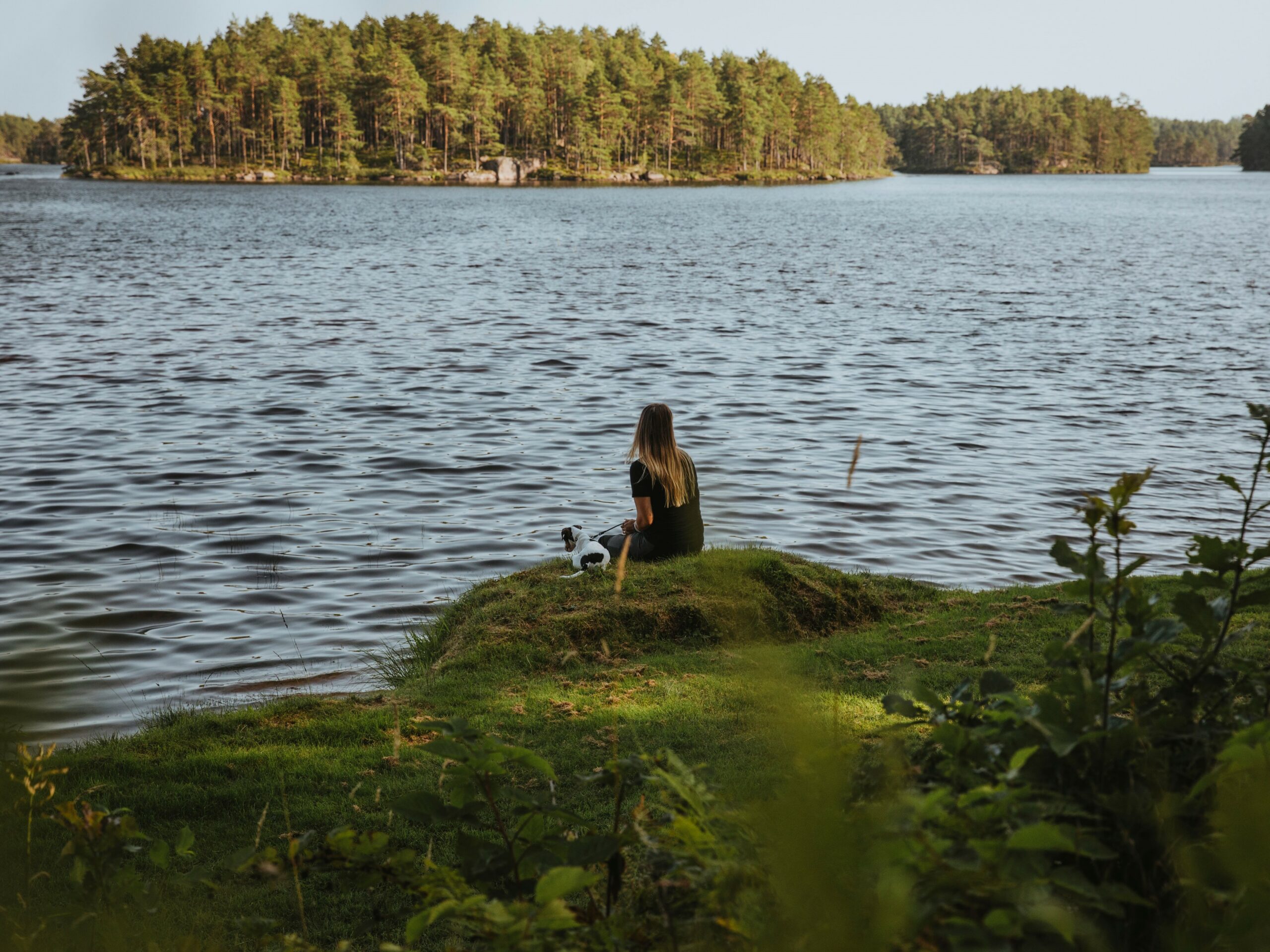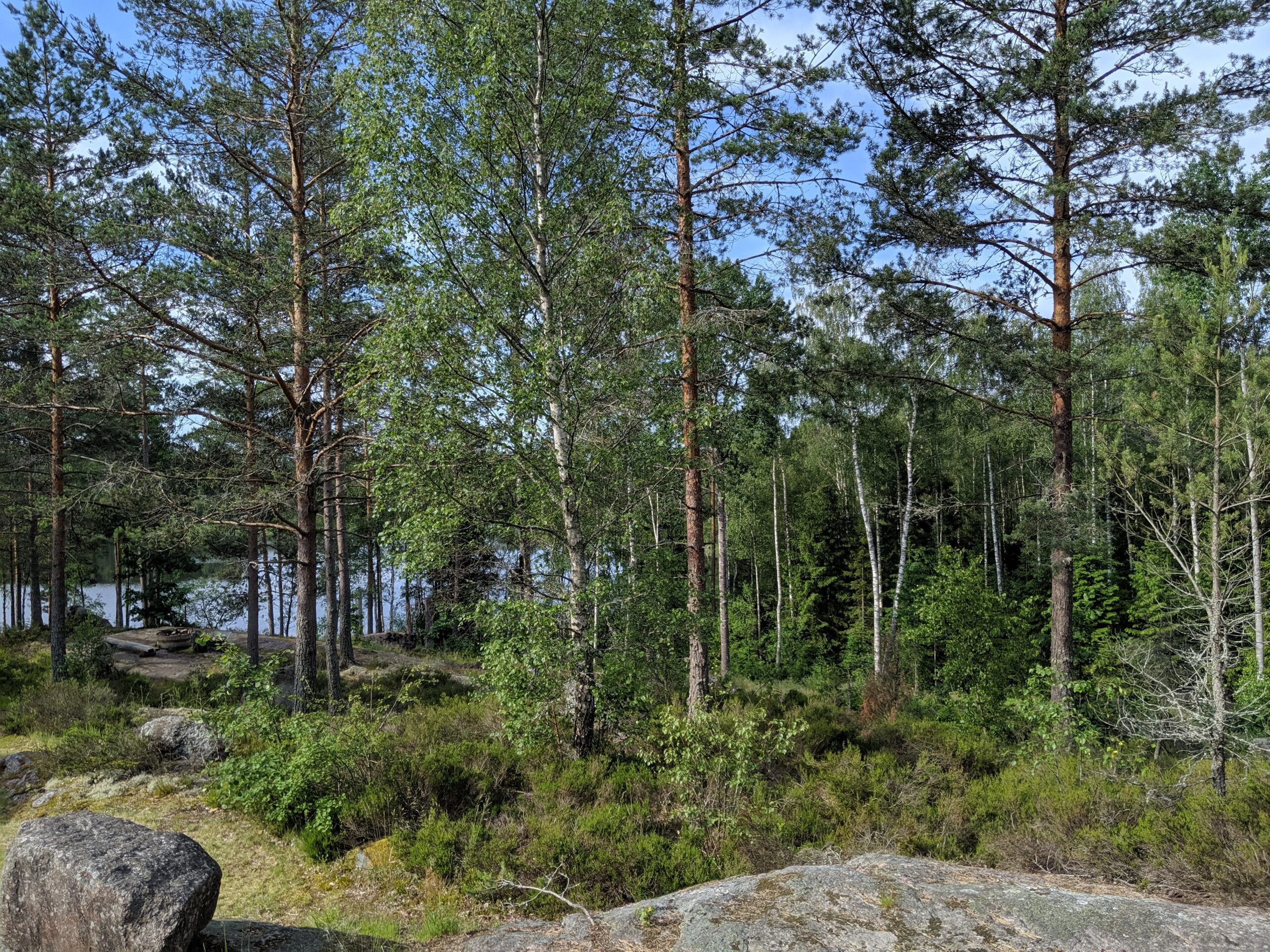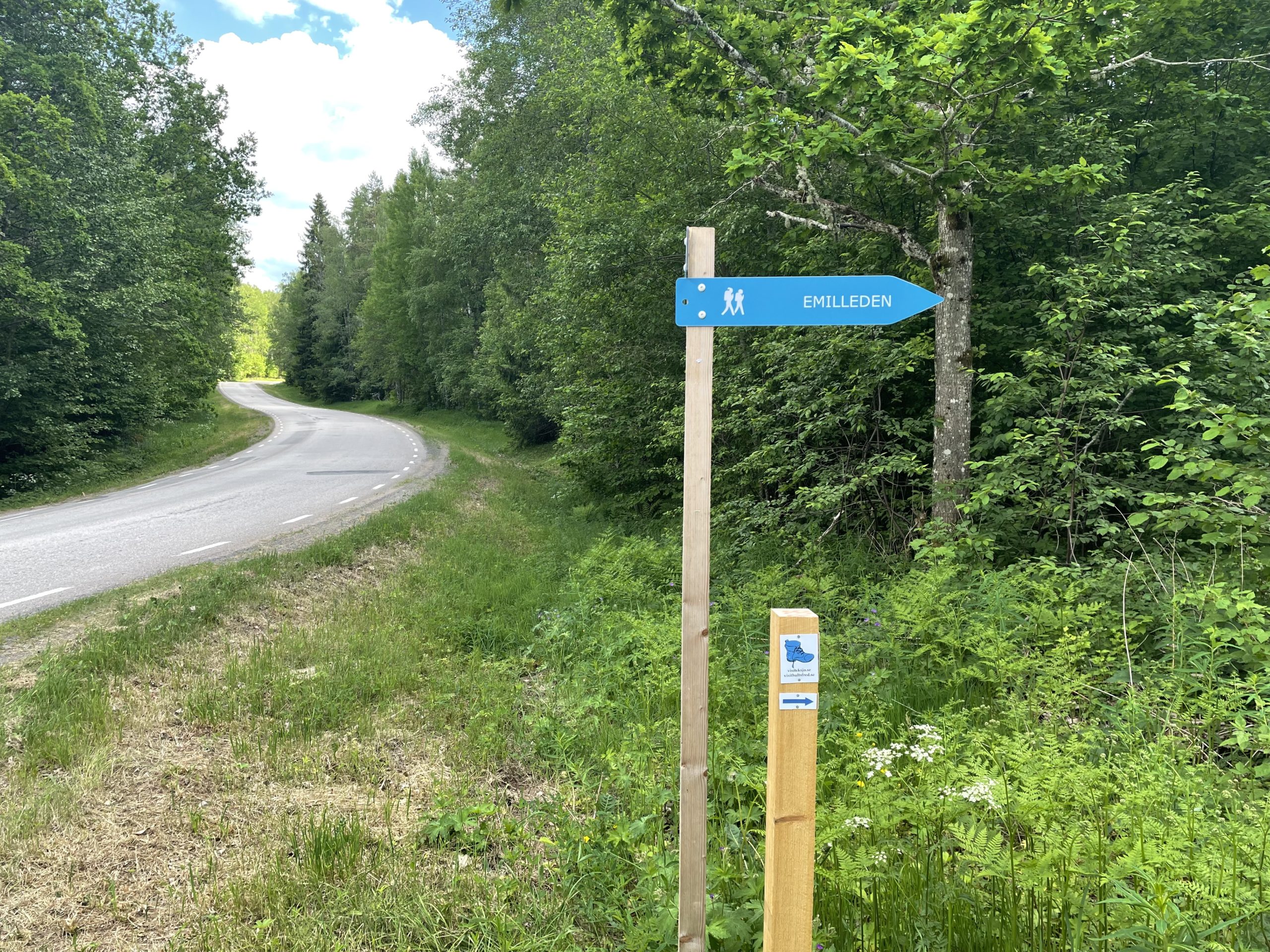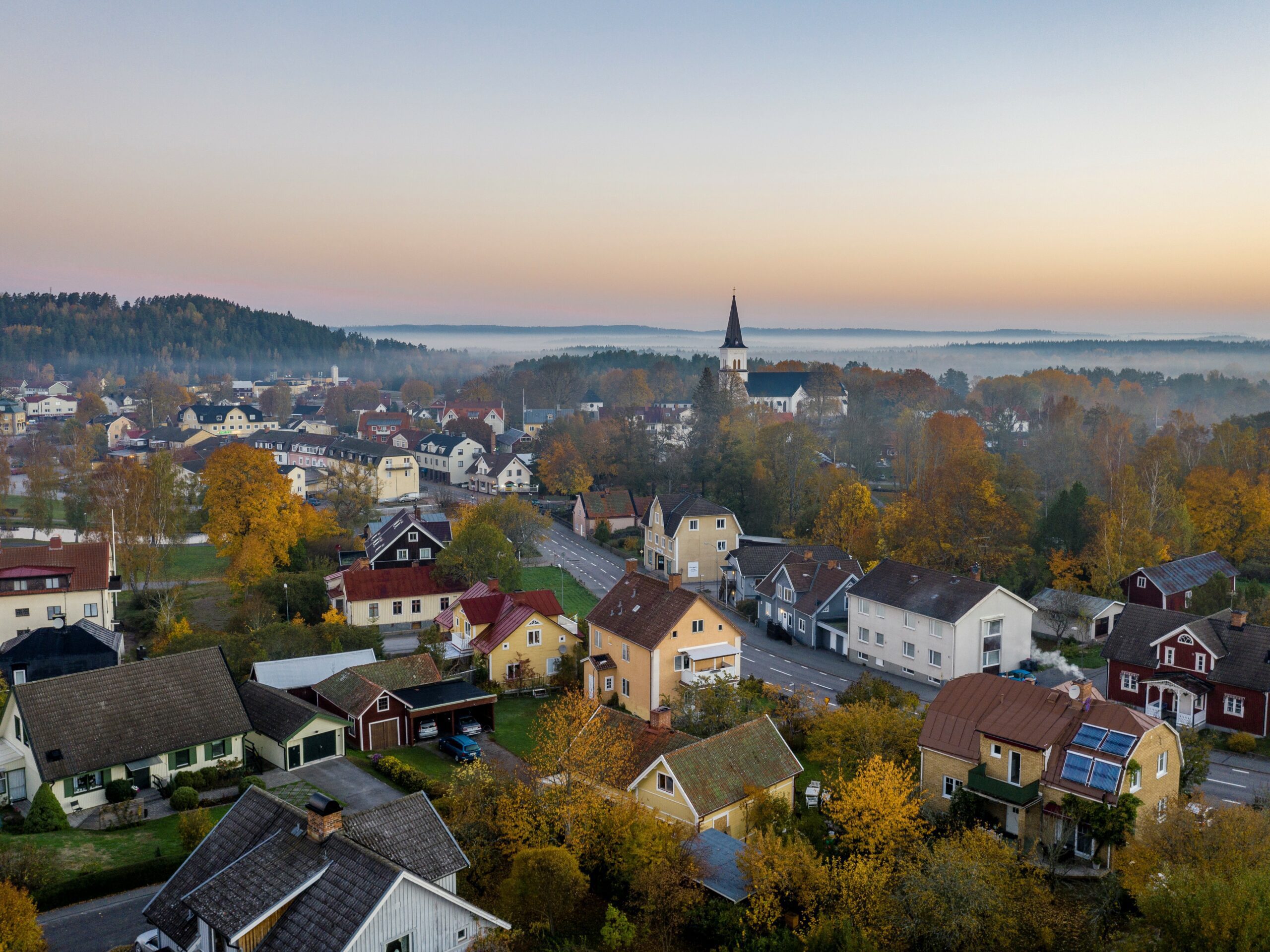
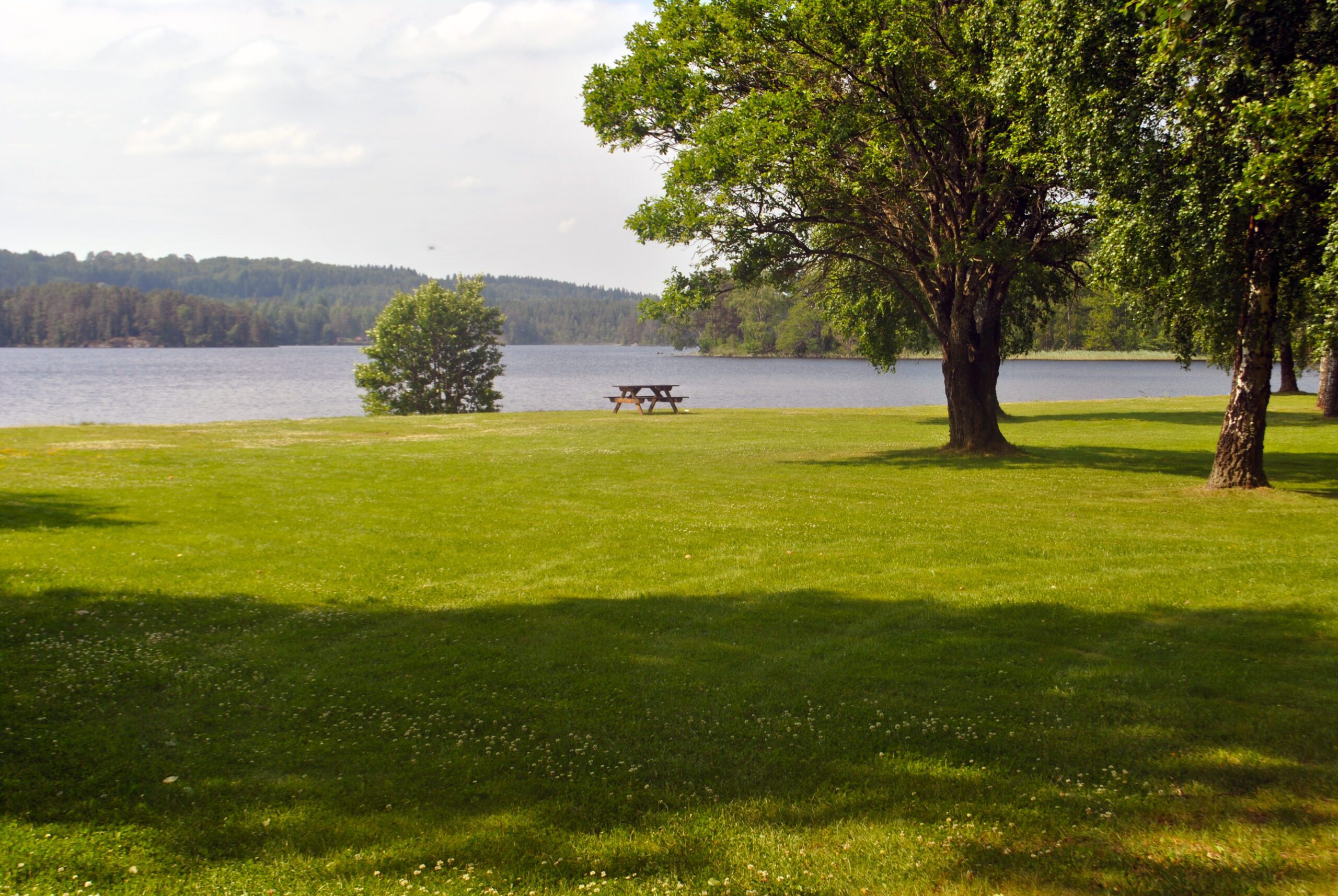
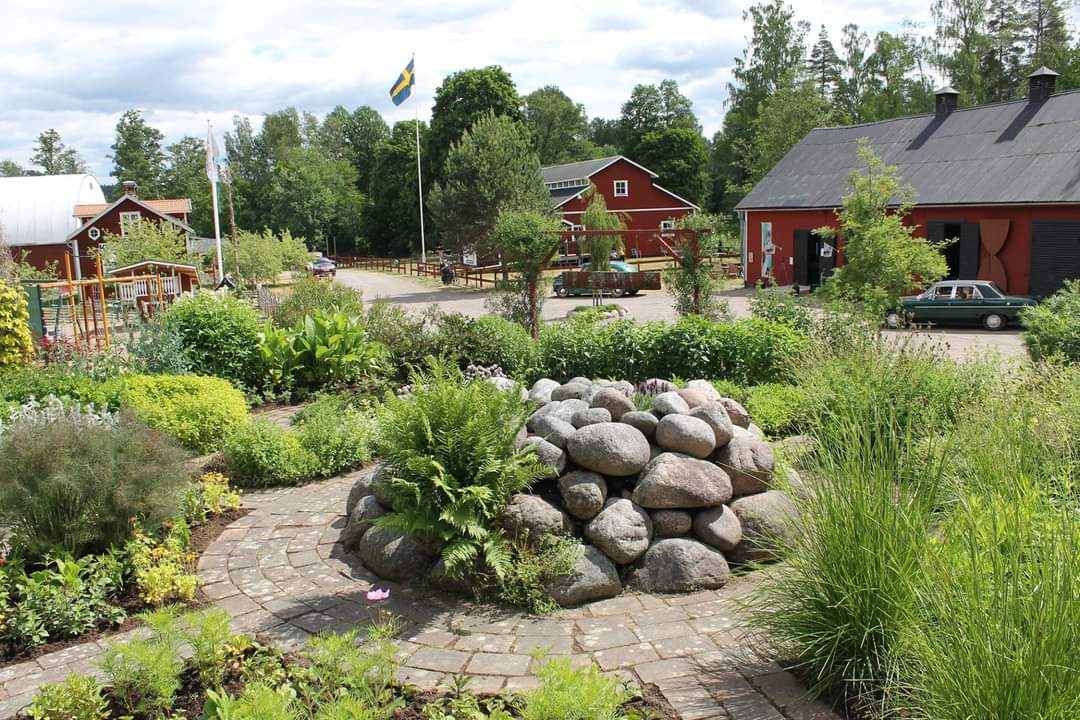
Discover Virserum on your own. If you have a moment left during your visit to Virserum, we recommend you do a city walk on your own. On the small walk you get to see part of Virserum and read about the town's history.
Folder is available at Hultsfred- and Virserums Tourist Information.
Virserum is the municipality's second largest town. The week after midsummer, Virserum's Music Days are arranged. The area “The company” with Virserums Konsthall, Sveriges Telemuseum and Virserums Möbelindustrimuseum is a destination of the highest rank.
Virserum is mentioned in 1278 as Widisrum, which means clearing in the forest. As early as the 1100s, a church was built at the site of today's church from 1881.
In 1543, Gustaf Vasa supplanted the rebellious peasants under Nils Dacke's leadership. The final battle of the Dacke feud was settled on Lake Hjortens ice outside Virserum.
Thanks to Virserumån's four waterfalls, industrial development gained momentum in Virserum. Around 1880, there were mills, paper mills, sawmills, spinning mills and dyeing shops by the river. Virserum was during the heyday of the 1940s a furniture metropolis with about 40 furniture industries. Ekelund's carpentry factory - popularly known as “The Company” - was the largest workplace. If you see an older industrial building in Virserum, you can almost be sure that furniture has been made in it at some point.
Virserum got a railway connection with Växjö in 1911. Eleven years later, the section Virserum-Hultsfred was inaugurated and the track Växjö-Västervik was thus complete. The narrow gauge railway with associated buildings is a building memory.
The view from Dackestupet is wonderful, it is an alpine facility with slopes both for daring and cautious.
1. The company area
Here was Oskar Edv. Ekelunds Snickerifabriks AB or popularly called the "Company". It was Virserum's largest furniture factory with at most 240 employees. After the decline and fall of the furniture industry, the remaining buildings were restored to become a tourism and cultural center.
There is much to see in the area. Virserums Konsthall is famous for exhibitions with modern folk art in installation form.
Sweden's Telemuseum reflects the development of telecommunications. There is also Stinsen, an association that sells handicrafts. The herb garden is a truly well maintained oasis with lots of different plants. Above the herb garden is a beautiful building from the mid-1800th century. It was built as a drying house for Strömsholm's paper mill, which was down by the river.
Adjacent is the Virserum Furniture Industry Museum, a copy of a furniture factory from the 1920s. An impressive water wheel drives shaft lines and machines. Upstairs you will find furniture made in Virserum.
2. Virserum Art Gallery
Virserums Konsthall is one of Sweden's ten largest, and also one of the most talked about. The Art Hall allows the art to be used to question and give language and thus power to the individual. The experiences of ordinary people can be seen and form the basis of the exhibitions. The exhibitions and projects are part of a great web about human life. Since Virserum is located in the forested Småland, forest, wood and sustainability is a main theme for the exhibitions every three years.
The huge "paper house" where the art hall is housed is an attraction in itself.
3. The Furniture Industry Museum
Virserum had as many as 40 furniture industries as late as the 1920s. Virserum Furniture Industry Museum is a living industrial museum The museum is a copy of a furniture factory in the 1895s. The oldest machine is from and several machines are manufactured locally, by Hjortöström's Mechanical Workshop.
Power source is the huge water wheel, shaft lines and transmission zones in the roof convey the power to the machines. The museum also gives an insight into how sculptors, wallpapers and banners worked. There are also the various craftsmen's hand tools.
The entire upstairs is a large exhibition of Virserum-manufactured furniture in typical environments. Adjacent is Gillman's smithy and a memorial exhibition of Demander's tool factory. The working sawmill derives power from a spark-ball engine manufactured at Målilla mechanical workshop. In the sawmill
there is also a wooden wool razor.
4. The Swedish Telecom Museum
The museum covers 650 square meters of telephone history. Here you can see the development of telecommunications for about 100 years, from the old manual stations to today's satellite technology. The development of the mobile phone from 1956 to 1992 has a very special position at the museum. A lot has happened
these years!
The exhibition also includes 300 telephones for fixed telephony. In addition, there are built-up time-typical environments, switches, Televerket's peripherals, measuring instruments, remote printers, faxes, pagers, fast telephones, calculators, typewriters and pirate radio transmitters.
5. Wooden bridge Phytagoras
Wooden bridge Phytagoras won in 2004 the Swedish Road Administration's design competition for a new wooden bridge over the Virserumsån. The bridge is of the type span bridge. It was one of four proposals from architectural firms in Sweden, Norway and Denmark. The competition was part of the Swedish Road Administration's quest to increase the experience of building bridges in wood for car traffic,
dimensioned for full traffic load.
6. The mill
The mill was added in the 1700th century but then had a different location upstream of the Virserumsån. It was moved to its present location in 1866 and operated with water wheels. In 1926, new owners took over cases and a mill and installed the turbine for electric power. The mill was in operation until the late 1970s and is exemplary today
renovated.
7. The old fire station
The building dates from 1925 and was then known as spray booths or fire tools. Of course, it also had a high snake tower. When the fire trucks made their entrance, the facade changed. The snake tower is long gone but has been reused at Klippan summer farm, but converted to small cottages there.
8. The Nils Dacke statue
In the square in Virserum stands Arvid Källström's statue of Nils Dacke, the leader of the uprising against Gustav Vasa. In memory of Nils Dacke and the events of the Dacke feud, this statue was erected in 1956 by Nils Dacke. Artist Arvid Källström designed the statue so that Nils Dacke would point his ax shaft towards Stockholm and his royal heir enemy Gustav Vasa.
The decisive battle of the Dacke feud took place on Lake Hjorten's ice outside Virserum. The peasant army lost the battle. But for centuries to come, kings would fear a new Dacke rebellion. This contributed to the fact that kings after the end of the Dacke feud were much more responsive to the people's dissatisfaction and that hard-handed bailiffs were rebuked for not encouraging the people to rebel.
9. Church of Virserum
Virserum's church was built between 1879 and 1881 after the old church was demolished. The church is in a neo-Gothic style with the characteristic high spiral and with pointed arched windows and portals. The altarpiece is from 1736 and the pulpit is a provincial work from 1626. In the tower of the church hang two bells, the large with coinprints showing that it must have been cast during the 1520s.
10. The parsonage
The oldest parsonage was burned in 1811. A new parsonage was erected after the fire, it got its current appearance in connection with a major restoration in 1950. The site has an old greenhouse from the 1700th century. When the current parsonage was erected is unclear.
11. Gunnarssonska farm
The stately manor building shows what the main building could look like on well-kept farms in Virserum during the second half of the 1800th century. The first post office was located in the courtyard building in the 1870s. It is probably the oldest preserved property in the church village.
12. Virserum station
The station house and the warehouse in Virserum were declared together with the Hultsfred-Virserum railway in 2005 as a building memory. The two buildings are from 1911 when the narrow-gauge railway Växjö-Klavreström-Åseda was extended to Virserum and renamed Växjö-Virserum Järn.
The railway became a boost for Virserum, which now had good opportunities to "export" its products from primarily the furniture industry. The freight warehouse was expanded in the 1930s and thus became the largest on the entire narrow gauge railway Växjö-Västervik.
The station house looks pretty much as it did when it was built. On the ground floor there is an expedition, luggage delivery, waiting room and two smaller rooms, one of which was intended as a second class waiting room. During the first ten years there were both second and third class waiting rooms. The large current waiting room is the former third class waiting room. Upstairs is the station manager's apartment.
The association Smalspår Växjö-Västervik bought the house from the municipality of Hultsfred in 2002 for a symbolic sum in order to preserve and equip it. The house had been empty for a few years. With extensive support from the county administrative board and the county museum and large voluntary efforts by the members of the narrow gauge association, extensive renovations have been carried out. Often rail buses and rail cars are lined up in the station area.
In the summertime, you can rent bicycle drinks for a trip south on the idyllic
banana.
13. The County Governor's Bed
Next to the Virserum lake is the nature reserve Länsmansgårdsängen. The reserve has an interesting vegetation. Among oaks and hammered lindens, there are, for example, back ultrons, tooth roots, common pulmonary herb and narrow-leaved pulmonary herb. In the meadow is Småland's only growing site for the hybrid between ordinary and narrow-leaved pulmonary herb. The herb blooms in April-May. There is also a hiking trail that runs along the lake.
14. Virserum's hometown park
In the home park you can see the old building construction and home furnishings. In total, there are around 15 buildings from the early 1600s to the 1900s as well as rich collections from the Stone Age to the present.
The Fagerströmsstugan is a knot-timbered building on two floors, probably from the late 1700th century or early 1800th century. Until 1918 it was the main building on Emil Fagerström's farm in Misterhult. Kombergstugan is a small peat-covered log building with a very old building and housing condition. It is traditionally erected by the soldier Berg when he had returned home from the Thirty Years War.
Ruben Nelson's Photo Studio is a beautiful Art Nouveau building. The old foot equipment is kept intact.
Tilda's cabin has the furnishings and furnishings that the last owner left
1940. The cottage is a log cabin with a cabin, kitchen and room.
15. Seed paper mill use
Fröåsa is the only preserved paper mill in Sweden. In 1802 this mill was erected some half a mile outside Virserum and became the first industry in the town. For the first time, printing and writing paper was manufactured, and in recent years they switched to coarser types of paper. In 1921, the paper mill was installed to be put down
at the big exhibition in Gothenburg. Eventually, the mill was brought back home and mounted in 1950 in Virserum's home park.
Every summer, the paper mill is open for viewing.
-
- Good things to take with you on a day trip can be water, patches, map, mobile, extra sweater layers in stock and socks.
- Dogs must not be loose in the wild during the period 1 March - 20 August.
- The elk hunt goes on in mid-October.
- Bring a bag for rubbish & leftovers
- Inform yourself about any current fire bans. In normal cases, you can make a fire but do not fire on rocks or stones and extinguish the fire properly.
Share
Reviews
Unexpectedly nice hike! One of the favorites in the Vetlanda / Målilla area. Well maintained path, incredibly nice forest with rocks thrown in. There is a lichen exhibition halfway. Cool! Parts of the path go through a part of the forest that has burned. Cool experience to see what survives and how nature recovers. Plus for all the blueberries and the "rock castle" in the middle which is a good coffee spot.
Very nice hiking trails. The land feels fantastic and the whole forest has a very magical atmosphere. There is also a fireplace where you can grill.
Wonderful hiking trail, easy to do, straight through nature and along the water. Rest areas and well maintained.





